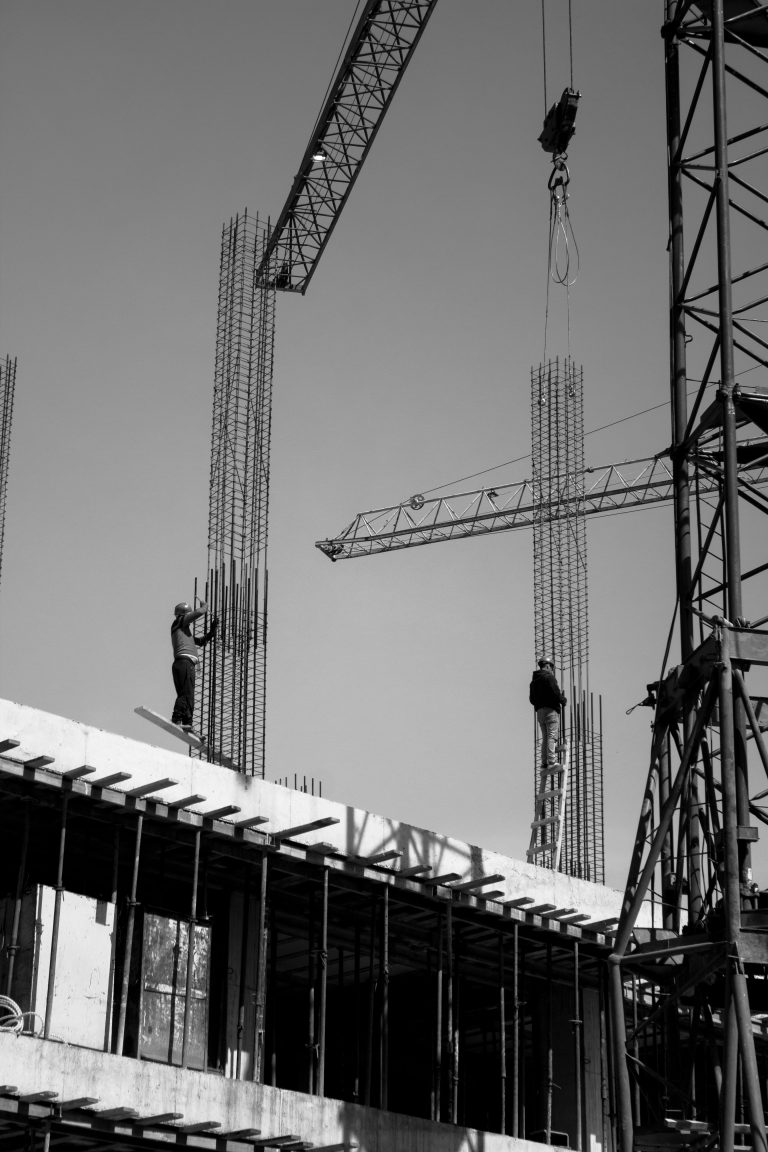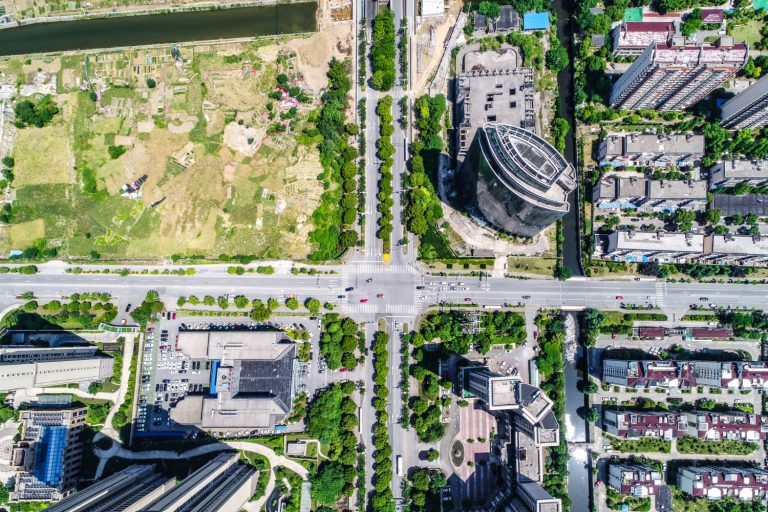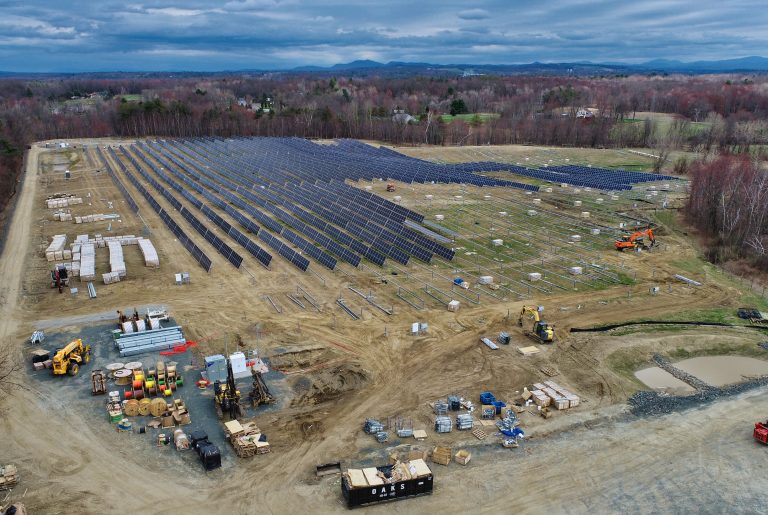Aerial Progress Reporting for Commercial Construction Boost
You know the feeling. You’re juggling subcontractors, dealing with supply chain hiccups, and trying to keep a multi-million dollar project on track. The last thing you need is a surprise that throws your entire schedule off, but that is what so often happens.
That is where using aerial progress reporting for commercial construction can completely change your workflow.
It gives you a bird’s-eye view, but it’s much more than just a nice picture. Great aerial progress reporting for commercial construction gives you the hard data to make smart decisions fast.
You can finally stop guessing about what is happening on-site. You will see exactly where you stand against your plans each week.
This level of clarity helps you solve small problems before they become huge, costly delays, and enables you to monitor construction effectively.
The Old Way vs. The New Way: A Quick Comparison
For decades, construction oversight relied on people walking the site, taking notes, and snapping a few photos with a camera.
This approach to project monitoring worked, but it was slow, often inaccurate, and provided an incomplete picture.
These traditional methods also involved placing people in potentially dangerous situations solely to obtain a measurement.
Aerial data changes all of that by providing critical data quickly and safely. It gives project managers more accurate information faster than ever before. Let’s look at how the old and new methods for construction progress monitoring stack up.
| Feature | Traditional Methods | Aerial Reporting |
|---|---|---|
| Data Accuracy | Relies on manual measurements; prone to human error. | Survey-grade accuracy; measurements down to the centimeter. |
| Speed | Takes days to walk a large site and compile a report. | Site data is captured in hours; reports are available in 1-2 days. |
| Safety | Requires people to walk active and potentially hazardous areas. | Keeps your team on the ground and out of harm’s way. |
| Cost-Effectiveness | High labor costs for site walks and survey crews. | Reduces labor costs and catches expensive mistakes early. |
| Stakeholder Updates | Static photos and complicated spreadsheets. | Interactive 3D models and easy-to-share visual reports. |
The difference is clear. While manual site inspections will always have a place, supplementing them with drone construction progress reports elevates your capabilities. You spend less time gathering information and more time using it to make impactful decisions.
Why Aerial Progress Reporting for Commercial Construction Changes Everything
Adopting this technology isn’t just a minor improvement in process. It represents a fundamental shift in how you see and manage your entire operation.
Keep Your Project on Schedule and Under Budget
Most large construction projects face delays and cost overruns. A study by McKinsey found that large projects typically take 20 percent longer to finish than scheduled and are up to 80 percent over budget.
Aerial reporting helps you fight that statistic directly through detailed progress tracking.
You can see if earthwork is on schedule or if foundations are being poured in the right sequence.
The reports allow you to overlay design plans, like CAD drawings or BIM models, directly on top of the actual site map.
You can spot a clash between the plans and reality in seconds, identifying issues early before they lead to costly rework.
This method also makes verifying work for payment applications much easier. You can prove exactly how much concrete was poured or how much pipeline was installed with verifiable volumetric data.
This ends disputes with subcontractors and ensures you only pay for completed work, helping you save money.
A Major Boost to Job Site Safety
Nothing is more important than the safety of your crew. A construction site is a dynamic and dangerous place. Aerial reporting offers a powerful new tool for your safety managers and for ensuring safety protocols are followed.
Instead of sending someone up on scaffolding or near an open excavation, a drone can inspect it safely from a distance.
You can check the condition of a roof, look for structural issues, or monitor stockpiles without putting anyone at risk. This reduces the time spent in potentially hazardous areas.
You also have a visual record of site conditions, access points, and emergency routes.
This detailed manual of the site can be used for safety briefings, training, and incident investigations.
The ability to view site conditions remotely provides an invaluable layer of construction oversight.
Crystal Clear Communication with Everyone Involved
How many times have you tried to explain a complex site issue to a client over the phone? It can be difficult.
Spreadsheets and stacks of photos often create more questions than they answer, making it hard to keep investors informed.
Now, imagine sending them a link to a 3D model of their project. They can see the progress for themselves, experiencing a virtual site tour from their own computer.
They can fly through the site, seeing exactly where their investment is going and how the finished project is taking shape.
This transparency builds an incredible amount of trust and confidence. Owners, real estate developers, and bank representatives feel connected to the project, even if they are hundreds of miles away. It simplifies your progress meetings and keeps all team members on the same page.
For commercial real estate projects, this comprehensive site documentation can be a valuable asset. It provides a detailed history of the construction process, which can be useful for facility management or future sales.
How Does the Process Work?

Getting started with aerial reporting is simpler than you might think. A good provider of drone construction services handles all the technical parts for you. Your job is to use the powerful data they give you.
Here is a typical look at the steps involved.
- Initial Consultation and Flight Planning – First, the provider sits down with you to understand your project’s goals. They figure out what you need to track and measure. Then they create a customized, repeatable flight plan for your site, sometimes incorporating ground control for higher accuracy.
- Data Capture On-Site – A fully licensed and insured pilot visits your site on the scheduled dates. Following Federal Aviation Administration regulations, the drone flies the mission automatically. This ensures the data collected each week is consistent and the capture images are high quality.
- Data Processing and Analysis – This is where the transformation happens. The thousands of captured high-resolution images are uploaded to powerful cloud computers. They are processed into the orthomosaic maps, point clouds, and other reports that you need.
- Delivery and Review – You get a secure login to an online platform where all your project data is right there. You can view it, make annotations, take measurements, and share reports with your team with just a few clicks. This platform becomes your single source of truth for site progress.
What Kind of Data Do You Actually Get?
This is where the real value comes in. You are not just getting pretty aerial photos. You are getting actionable business intelligence that can transform your project management.
Each deliverable gives you a different view of your project. Together, they create a complete picture of everything happening on your site.
This is the information you have always needed but could never get easily with traditional methods.
- Orthomosaic Maps – These are high-resolution, top-down maps of your entire job site. They are geometrically corrected, meaning you can take accurate measurements directly from them for things like distance, area, and stockpile placement. They are far more current and detailed than any satellite image, offering a true-to-life view of site conditions.
- 3D Models – These are interactive, photorealistic models of your site and structures. You can rotate, pan, and zoom to see every angle. This is great for visualizing progress and identifying potential issues, giving all project stakeholders a clear understanding of the building process.
- Point Clouds – A point cloud is a massive set of data points in 3D space, representing the external surfaces of objects on your site. These extremely accurate point clouds can be imported into design software to compare as-built conditions against BIM models or CAD drawings. This allows for precise deviation analysis and quality control.
- Volumetric Measurements – Need to know how much dirt is in a stockpile or how much earth needs to be removed from a foundation? We can calculate these volumes with very high accuracy. This is critical for aggregates and earthwork contractors, ensuring accurate billing and resource management.
- Progress Photos and Videos – Of course, you still get high-quality images and video clips from various aerial views. These are professionally captured by insured pilots and are perfect for your own marketing efforts, social media updates, and internal presentations. Capturing high-resolution visuals remains a key part of the service.
Finding the Right Aerial Partner in the Northeast
When you look for a company to provide this service, you need a true partner. Flying a drone is easy, but turning that imagery into reliable, survey-grade data is a highly technical skill that requires experience in construction aerial photography.
You want a company that is fully licensed and insured. All commercial drone pilots must have a Remote Pilot Certificate from the FAA under Part 107 rules. Ask to see their certification and proof of insurance before they step onto your construction sites.
Experience in the construction industry is also vital. A photographer who shoots for commercial real estate has a different skill set than a data specialist who understands your project monitoring needs.
Look for a provider who speaks your language and understands the challenges of monitoring construction.
Here in the Northeast, weather is a big factor. Working with a local provider from New York, Connecticut, or Massachusetts means they understand the regional challenges. They know how to schedule flights around our unpredictable snow, wind, and rain to keep your data flowing without interruption.
Conclusion
Managing a major construction project is always going to have its challenges. You’re trying to orchestrate a complex dance of people, materials, and machinery on a tight schedule. What you do not have to deal with is the lack of clear, timely, and accurate information.
The insights you get from routine aerial progress reporting for commercial construction can be the most valuable tool in your project management toolbox.
It transforms how you handle everything from site safety and progress tracking to stakeholder communication. The data gives your team members the clarity they need to collaborate effectively.







